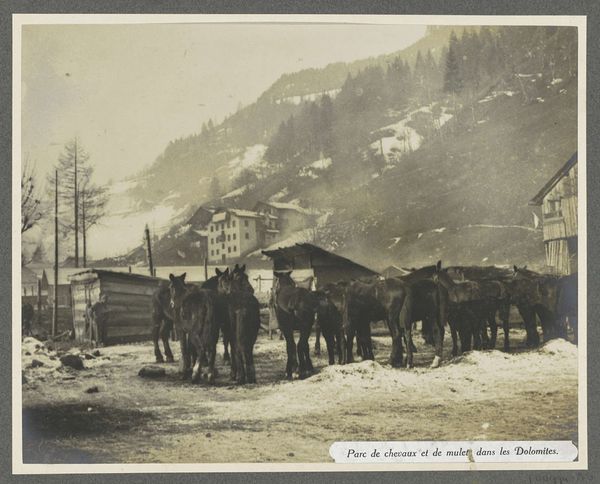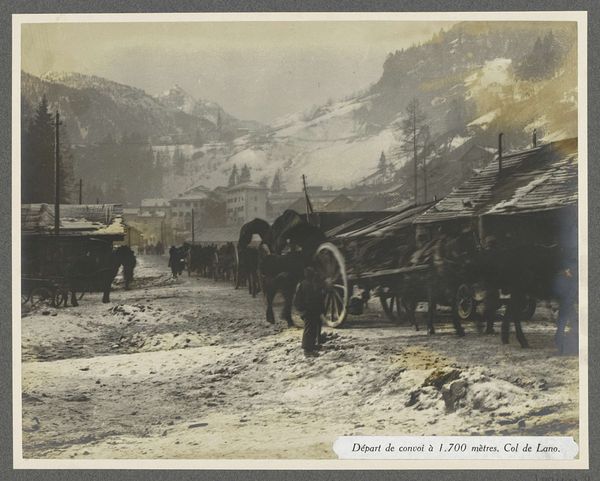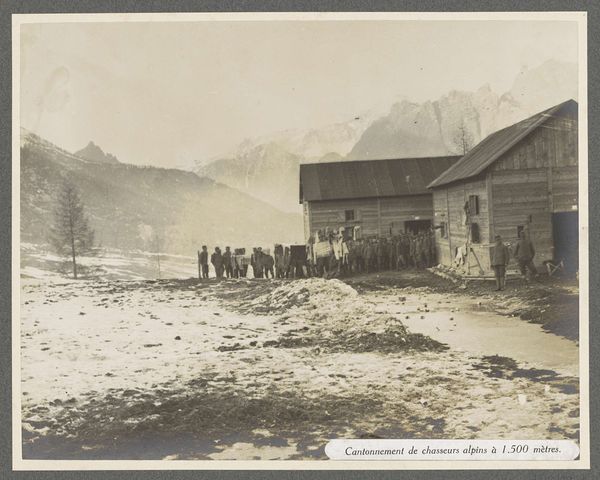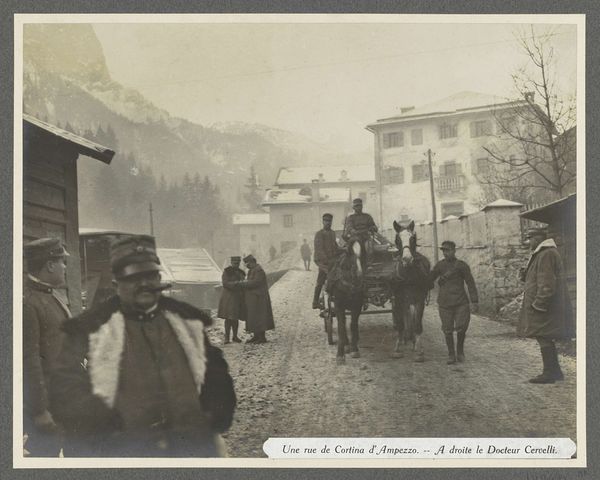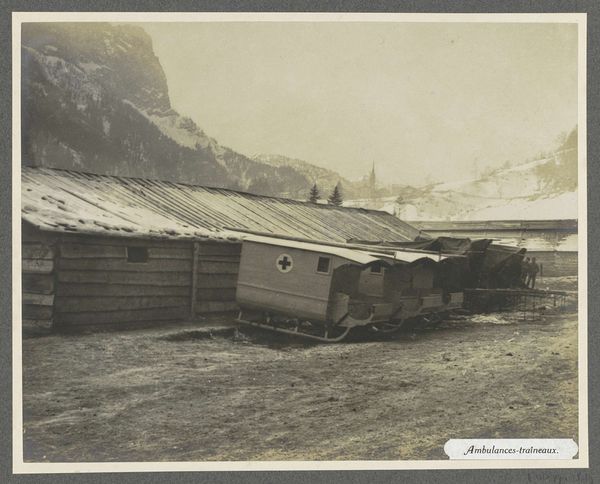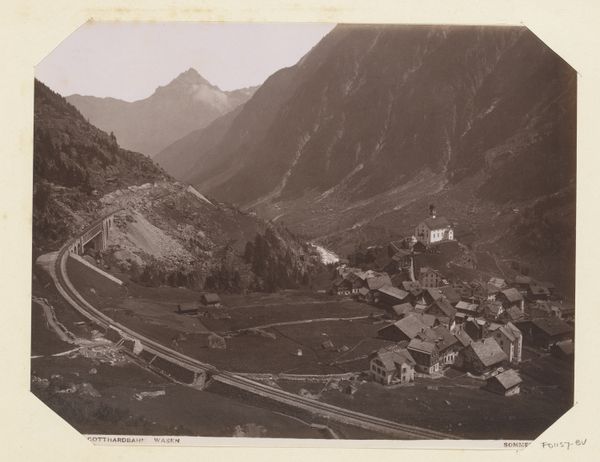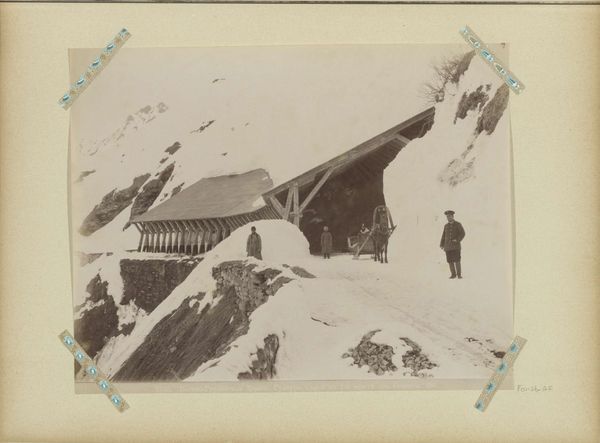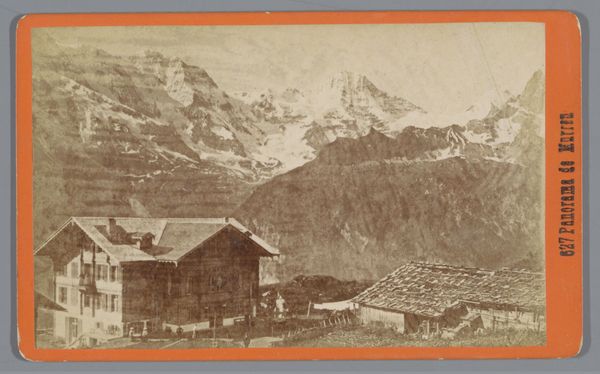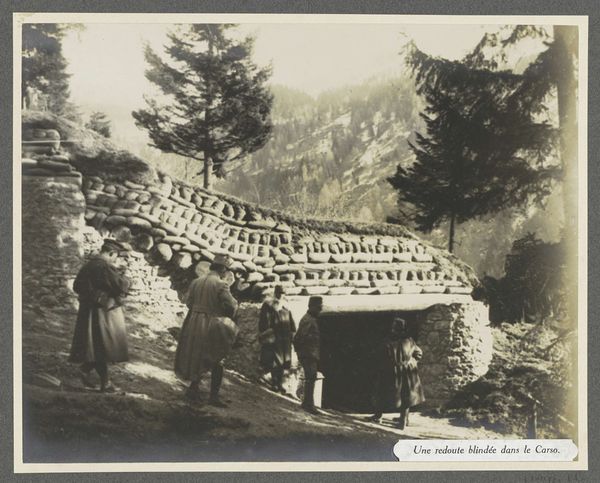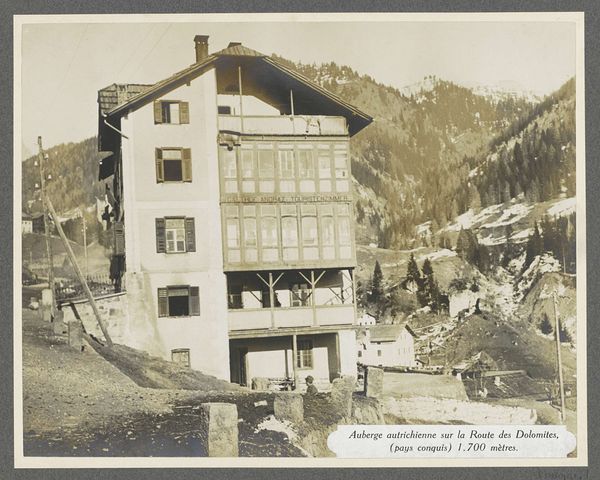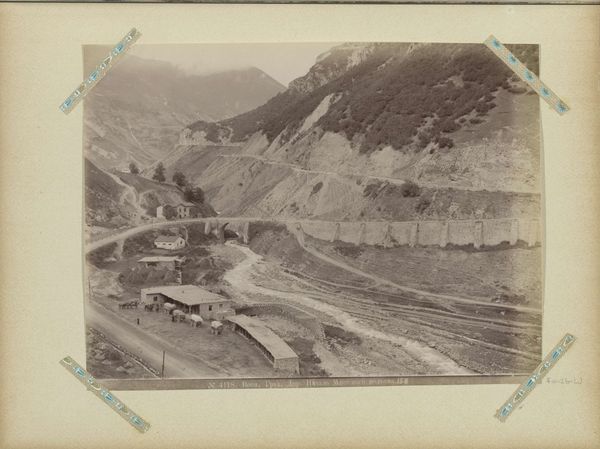
Artilleriepark met karren en kanonnen op 1700 meter bij de Col de Lano (Lana) 1916
0:00
0:00
print, photography
# print
#
landscape
#
photography
#
realism
Dimensions: height 220 mm, width 280 mm
Copyright: Rijks Museum: Open Domain
Curator: This is a photograph entitled "Artilleriepark met karren en kanonnen op 1700 meter bij de Col de Lano (Lana)", taken in 1916. It's a black and white scene, seemingly documenting a moment frozen in time amidst conflict. Editor: My first impression? Bleak. The monochrome palette emphasizes the harsh reality of war, doesn't it? It feels cold, isolating. Curator: Absolutely. I feel the same chill. Look how the light captures the texture of the snow—almost palpable. But consider the placement: this park of artillery at such high altitude, the Col de Lano; it speaks volumes about the theater of war in World War One. It suggests a struggle fought in the most inhospitable environments. Editor: Indeed. The photograph unveils the strategic importance of mountain passes, which served as both natural barriers and critical military positions. The carriages and cannons set against the stark mountain landscape bring to mind the socio-political reality of warfare in formerly inaccessible geographies. Curator: Exactly, and that vulnerability is amplified, in my eyes, by the seeming banality of the artillery park. It’s almost surreal to see those ordinary looking wooden carts loaded in that terrain, juxtaposed against the sublime vastness of the mountains. There's this tension, a sort of cognitive dissonance that hints at the emotional undercurrent. What thoughts would have run through the minds of people assembling or standing guard here, far away from friends, home and safety? Editor: It's a somber reflection. It hints at ecological concerns and colonialism, too. The disruption to the mountain ecosystem; it bears witness to humanity’s profound, sometimes devastating impact on the landscape. It is a colonial footprint; European powers fighting over territory, using land and lives as resources. The industrial-military complex. Curator: A sobering, powerful image, and a pertinent reminder. Thank you. Editor: Yes, thank you for highlighting the enduring importance of photographic images like this. It reminds us how even a single frame can hold echoes of collective memory.
Comments
No comments
Be the first to comment and join the conversation on the ultimate creative platform.
